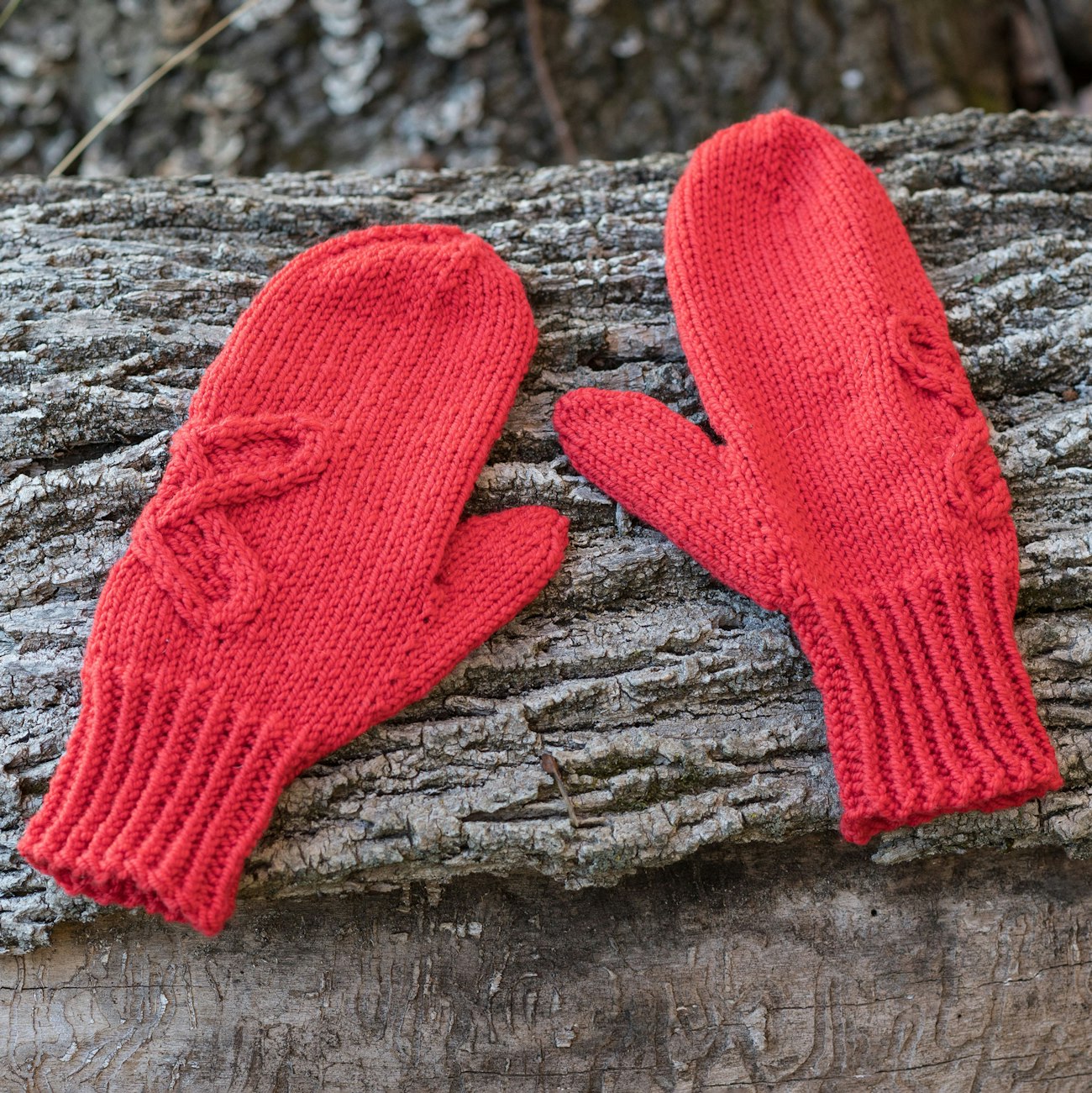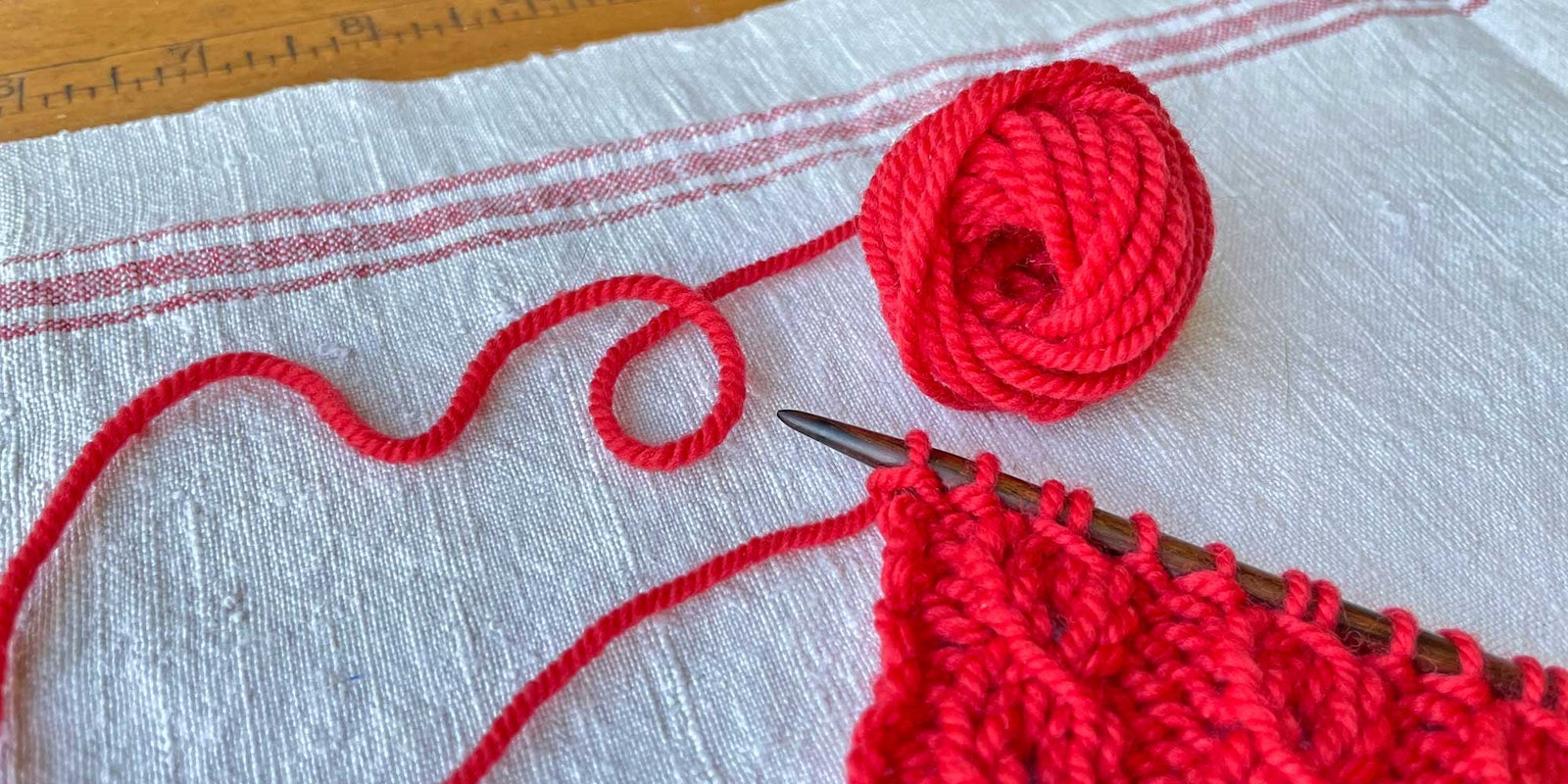Merino sheep grow dense, gloriously crimpy fleeces, but not all the Merino yarns we encounter retain the bounce and velvety hand of a farm-fresh fleece. Yarns that keep these natural characteristics are a delight to feel slipping through our fingers and onto our needles, but that’s not their only benefit. Knitting patterns that rely on slipped stitches and cables in particular can benefit from a finewool’s built-in elasticity.
After learning about Shaniko Wool Company’s (SWC) US-grown, Responsible Wool Standard certified wool, I was eager to get my hands on a ball of Knit Picks High Desert. Described as a “boutique-style yarn,” High Desert is created using SWC Merino and Merino/Rambouillet grown on Western rangelands that is then scoured and spun in the Carolinas. I grabbed a handful of needle sizes and set to swatching.
On the Needles
Before I even picked up the skein, I noticed that this plump, round three-ply had a strong twist angle. Handling the yarn, I found it had the feel of a very fine wool and elasticity to match. The natural crimp in the wool was still so springy that it could be spun with a strong twist in the singles and ply without getting dense and ropy.
The ball band for High Desert worsted recommended needle sizes US 6–9. I decided to try sizes 5, 7, and 9 with the same slipped-stitch motif to see what would happen.
 Using Barbara Walker’s Yarn-Over Cable pattern, Kate worked a swatch using High Desert worsted and three needle sizes: US 5 (3.75 mm), US 7 (4.5 mm), and US 9 (5.5 mm).
Using Barbara Walker’s Yarn-Over Cable pattern, Kate worked a swatch using High Desert worsted and three needle sizes: US 5 (3.75 mm), US 7 (4.5 mm), and US 9 (5.5 mm).
The smallest needle (bottom of the swatch above) created a dense fabric with a sharp relief in the rib. The middle needle size loosened the fabric somewhat, but the ribbing effect was still strong. The largest needle size opened the fabric enough that the ribbing relaxed and flattened somewhat after blocking. The two smaller needles would create a stretchy mitten cuff or beanie, while the largest needle size would be a good fit for the body of a sweater.
Twist, Crimp & the Slipped-Stitch Test
Overall, High Desert worked well at several gauges, but what I wanted to see was how that slipped stitch at the base of the little eyelet motif fared in my swatch.
 Take a close look at the stitch that lies at the base of the eyelet. This is the loosest gauge, worked on a US 9 needle.
Take a close look at the stitch that lies at the base of the eyelet. This is the loosest gauge, worked on a US 9 needle.
Both slipped-stitch and cable motifs create surface texture by reordering stitches, and we knitters need to coax them into new locations as we work. In this case, a slipped stitch is dropped over two neighboring stitches, which places tension on the slipped stitch as it stretches a bit. An inelastic yarn can look loose after the psso (pass slipped stitch over), and a low-twist yarn can start to look a bit underspun. A springy, medium- to high-twist yarn will keep its shape, nestle into the stitch pattern, and still look well plied. Even on the largest needle size, my slipped stitches still looked great before and after blocking.
Twist is what gives our yarn strength and durability, so pairing this soft Shaniko wool with a strong twist will help keep our handknits wearing well and looking great.
—Kate

Check out the Columbia Mittens pattern here to see Knit Picks High Desert Worsted in a great traveling cable pattern!

